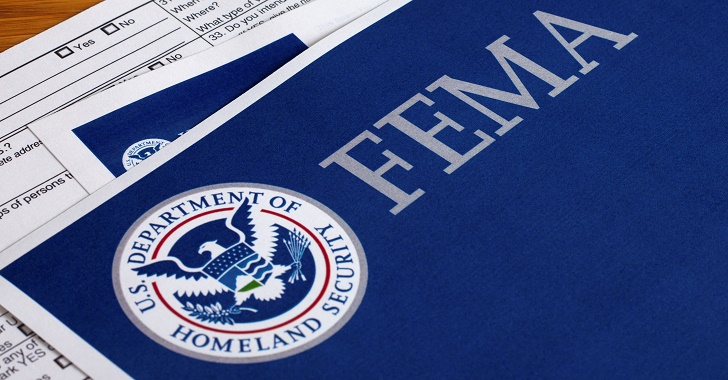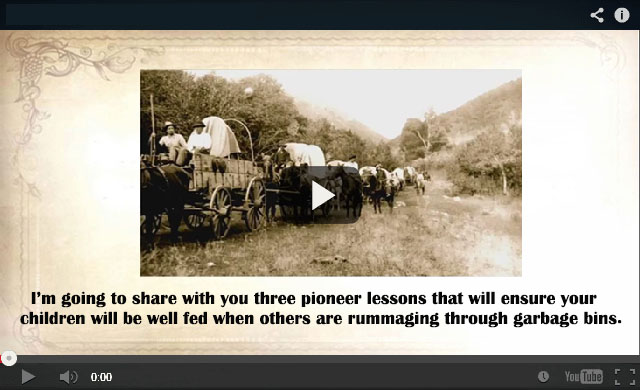 Preparations by various cogs of the national security complex, including FEMA, indicate a coming worldwide food shortage — and a resulting crisis marked by extreme civil unrest around the globe.
Preparations by various cogs of the national security complex, including FEMA, indicate a coming worldwide food shortage — and a resulting crisis marked by extreme civil unrest around the globe.
As Motherboard noted of two reports published previously by CNA Corporation, but which largely escaped attention, the world’s food supply could be insufficient to maintain even current populations much further into the future. And the crisis — which several factors indicate may already be underway — may begin to worsen considerably as early as 2020.
Employing a desktop game simulation of the conditions of a global food shortage, titled “Food Chain Reaction,” CNA’s Institute for Public Research brought together “65 officials from the US, Europe, Africa, India, Brazil, and key multilateral and intergovernmental institutions,” Motherboard explained. And the Institute, which oversaw the simulation, “primarily provides scientific research services for the Department of Homeland Security and the Federal Emergency Management Agency [FEMA].”
According to the website for Food Chain Reaction: A Global Food Security Game — no commentary on Orwellian overtones needed — the “simulation and exercise intended to improve understanding of how governments, institutions, and private sector interests might interact to address a crisis in the global food system,” and took place in early November 2015.
“The scenario,” the description continues, “is set five years from today in a world where population growth, rapid urbanization, extreme weather and political crises combine to threaten global food security. The game’s players — high-level decision makers representing nations, international institutions, and the private sector — will collaborate, negotiate, make decisions, and confront tradeoffs while dealing with a chain reaction of consequences resulting from their actions.”
Participants received the briefing for the game through a mock TV newscast, which “challenged players to imagine a global food system under stress due to extreme weather and other environmental factors, urbanization and other demographic pressures, rising global food prices, and falling food stock levels.”
 After receiving information specific to each participant’s national and regional geography and climate, players were also permitted to employ solutions to the game’s burgeoning food crisis scenario on “national, bilateral, and/or broadly cooperative” levels.
After receiving information specific to each participant’s national and regional geography and climate, players were also permitted to employ solutions to the game’s burgeoning food crisis scenario on “national, bilateral, and/or broadly cooperative” levels.
Divided into four rounds, the simulation found spikes in food prices up to a whopping 395 percent, driven by extended crop failures in key regions, resultant from the confused reactions by international officials, drastic changes in the environment, and skyrocketing oil prices — many similar factors, the report notes, that drove a global food crisis spanning 2007 to 2008.
Though, at the height of the simulation’s worst repercussions, the food crisis affected virtually every societal and governmental aspect — such as mass civil unrest and widespread crop failures in the planet’s ‘breadbasket’ regions — the Institute ultimately painted a rosy picture of economic and agricultural recovery.
But for as detailed and reactive as the scope of the game sought to be, several glaring omissions likely skewed both results and proposed solutions — and despite backing from the U.S. government, the simulation’s corporate participants could have tacitly or overtly influenced the outcome.
Commissioned in part by Cargill, an industrial agribusiness behemoth, and Mars, the giant whose candy business has vested interests in promoting both genetically-modified food and industrial agriculture, the Food Chain Reaction simulation excluded among possible solutions the abolishment of industrial, factory farming. Considering large-scale agribusiness’ sizable impact on the environment, as well as the paradoxical system whereby industrial agriculture largely supports livestock from factory farms, that exclusion certainly calls into question any results.
Additionally, with FEMA an aspect of the futuristic simulation, it wouldn’t be outside the realm of possibility to see a call for increased funding in the name of ‘being prepared’ for a coming crisis of epic proportions.
Perhaps, though, an imperative exists in examining both the aspects of massive food shortage studied as well as potential solutions omitted. China recently began the push away from a meat-centric diet, in part because pollution from factory farms has wrought havoc in the air and water. All moralistic pontificating aside, a return to small-scale, organic farming and switching to vegetarian diets, or at least a reduction in consumption of meat, could avert or abate the coming crisis.
Are you worried about your future? Are you worried by the many disasters that you face in your everyday life? Worry no more. The Lost Ways comes in to solve your woes. This program was created by Davis Claude and its major role is to prepare and teach you how to handle worst-case scenarios using the least independence. This program will therefore motivate you to protect your family and friends during the worst period without the help of the modern technology.
Remember, calamities are everywhere: at work, home, school and many other places. These calamities cause tension and leads to a decrease in productivity. This may finally lead to a reduction in life. Fortunately, the lost ways review will provide solutions to these situations. It will give you the tips for preparing yourself when nothing seems to go as expected.
Generally, most people are optimistic. This makes them unprepared for failure. However, the best thing is to prepare for worst times. It is important to tell your kids about earthquakes, fire outbreaks, extreme weather conditions and other calamities. Tell them how to deal with these calamities in case they occur. Click on the video below for more knowledge on homesteading and survival!






